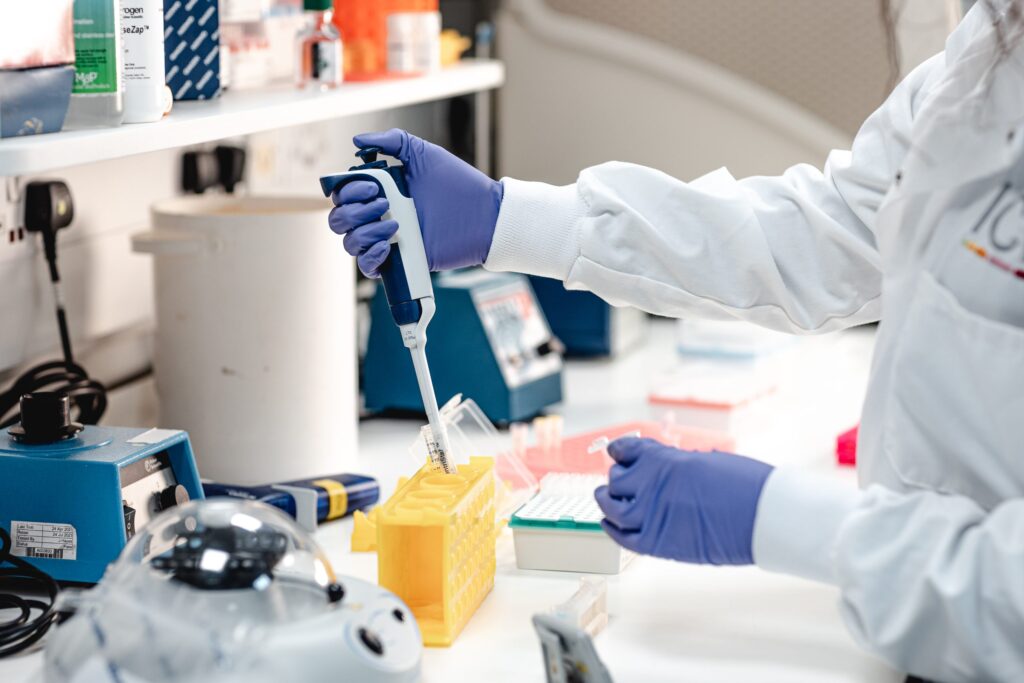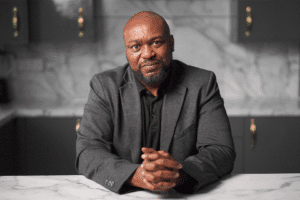Unstanding Cancer
Lymphoma
Lymphoma is a type of blood cancer.
The main types of childhood lymphoma are Hodgkin lymphoma and non-Hodgkin lymphoma.
What is lymphoma?
- Lymphoma is a type of blood cancer which develops in the body’s lymphatic system or lymph nodes. There are two main types of lymphoma: Hodgkin lymphoma, also known as Hodgkin’s disease and NHL, short for non-Hodgkin lymphoma. These are biologically very different tumours despite both being lymphomas. NHL, including Burkitt lymphoma, accounts for about half of all Lymphomas in children, Hodgkin’s disease the other half. The incidence of NHL increases peaks in young school-age children whereas Hodgkin’s disease is most commonly seen in teenagers.
- Lymphomas start in the lymphatic system, the network of vessels that runs throughout the body carrying white blood cells and other important immune system cells. This system includes the spleen, thymus, lymph nodes (small glands found along the vessels of the lymphatic system that filter out bacteria and other toxins) and lymphatic vessels (a network of thin tubes that carry lymph and white blood cells). Lymph nodes respond to infections by releasing white blood cells called lymphoid cells (also known as lymphocytes) into the blood stream to fight it off. Among others, two specific types of lymphoid cells are found in this system: B-cells, which generate proteins called antibodies that protect us from infection, and T-cells, which directly kill viruses.
- In the UK, Lymphoma accounts for around 10% of all cancers diagnosed in children (1). Lymphomas are rare before the age of four and incidence increases with age thereafter such that lymphomas account for nearly a fifth (around 19%) of all childhood cancers diagnosed in 10-14-year-olds in the UK (1).
Hodgkin lymphoma
Hodgkin lymphoma accounts for around 44% of all lymphomas diagnosed in children in the UK (1). Although the cure rate is high, it’s easily mistaken for other diseases, like glandular fever. Finding a simple way to diagnose it earlier would help children avoid unnecessary illness, and maybe mean less intensive treatment. Hodgkin lymphoma is distinguished from other types of lymphoma by the type of cancer cell formed – the Reed-Sternberg cell – which is not found in any other blood cancer.

Proteins secreted by tumour cells can be detected in the blood. We’re testing whether this can be used in the early detection of tumours.
Prof Ruth Jarrett, University of Glasgow
Professor Ruth Jarrett, who we’re funding to find a simple way to diagnose Hodgkin lymphoma earlier in children and avoid unnecessary illness.
Non-Hodgkin lymphoma
Childhood non-Hodgkin lymphoma lymphoma includes all types of lymphoma except Hodgkin lymphoma. It is the most common lymphoma in children (1). There are two main types of non-Hodgkin lymphoma: B-cell non-Hodgkin lymphoma (including Burkitt lymphoma), which usually arises in lymph nodes of the neck or the abdomen, and T-cell non-Hodgkin lymphoma, which arises in the thymus which is located in the chest above the heart. This difference is important as B-cell and T-cell non-Hodgkin lymphomas require different types of chemotherapy treatment.
Lenny was diagnosed with T-Cell non-Hodgkin lymphoma when she was eight years old.

Lymphoma symptoms
Hodgkin lymphoma symptoms include:
- a persistent (lasting a few weeks) painless swelling of a single lymph gland, usually in the neck, armpit or groin.
- Cough or breathlessness can occur if the glands in the chest are affected.
- fevers and sweats,
- Itching
- Weight loss
Non-Hodgkin Lymphoma cancer symptoms in children include:
- Painless swelling of a single lymph gland, usually in the neck.
- Cough or breathlessness can occur if the glands in the chest are affected.
- Stomach pains if abdominal lymph glands are affected
- Fevers and sweats
- Tiredness
- Weight loss
- Feeling full after a small meal
- Sleep sweats
Can Lymphoma come back?
Occasionally, the cancer can recur. When this happens it is called a relapse. Relapse occurs most likely as a result of a few of the original cancer cells surviving the treatment. Sometimes, this is because cancer cells spread to other parts of the body and were too small to be detected during the follow-up immediately after treatment. Treatment of the relapse will vary and be discussed as it may differ from the original course of treatment.
Lymphoma survival rate
Thanks to breakthroughs in research, five year survival from lymphoma in children have increased over the years. However, there are still differences in the survival rate for the different types of childhood lymphomas.
Hodgkin lymphoma – The 5-year survival rate for childhood Hodgkin lymphoma is over 97% in the UK (1). Almost all children with this cancer can be cured. It is important to note that survival rates vary depending on the stage of Hodgkin lymphoma.

Non-Hodgkin lymphoma – The majority of children can be treated successfully, with an overall five-year survival rate of OVER 89% in the UK (1). Read about Lenny’s non hodgkin’s lymphoma survivor story to learn about how he beat cancer.
Sources
(1) Children, teenagers and young adults UK cancer statistics report 2021, Public Health England
When you should see your GP
The exact diagnosis will be confirmed by removing part or all of an affected lymph gland so that the cells can be examined in the laboratory. This is known as a biopsy and is usually carried out under general anaesthetic.
Further tests, such as X-rays, CT and MRI scans and blood tests are carried out to determine the exact size and position of the lymphoma and whether it has spread. This is known as staging.
Hodgkin lymphoma may be defined as stage 1, 2, 3 or 4, followed by category A or B.
Stage 1 means that only one area of lymph nodes is affected at one site. Either above or below the diaphragm – the muscle that separates the chest cavity from the abdominal cavity.
Stage 2 indicates that two or more areas are affected but, again, either above or below the diaphragm only.
Stage 3 implies lymph nodes are affected above AND below the diaphragm and possibly the spleen as well.
Stage 4 Hodgkin Lymphoma is the worst stage as it means the cancer has spread to the liver, lungs or bone marrow.
Category A indicates that there are no systemic Hodgkin lymphoma symptoms which include fevers, weight loss, night sweats.
Category B means the symptoms are present and this implies you are more unwell and need further treatment.
During your treatment
The main treatment for lymphoma in children is chemotherapy.
Sometimes radiotherapy is also required. If the cancer has not spread beyond its original site, radiotherapy alone may be used, following surgery to remove the affected lymph nodes.
The type and amount of treatment given depends on the stage of the disease at diagnosis.
Where chemotherapy is used, it will usually be given every few weeks for a number of months.
Where radiotherapy is used, it is usually given for a few minutes each day over a period of two to four weeks.
Treatment may last for anything between a few months and two years, depending on the exact type of lymphoma and the stage to which it has progressed.
What is happening in the body and are there any side effects?
Treatment for lymphoma often causes side effects. These will depend on the particular treatment being used and the part of the body being treated and may include:
- Hair loss
- Tiredness
- Nausea
- Vomiting
- Reduced resistance to infection
- Bruising and bleeding
- Diarrhoea
A small number of children may develop late side effects, sometimes many years later, that are caused by their treatment for lymphoma. The main risks arise from the use of radiotherapy, which may impair growth and cause infertility. There is a risk of hypothyroidism associated with irradiation to the neck. Both radiotherapy and chemotherapy have also been associated with heart and lung complications.
There is an increased risk of second cancers in those who survive childhood cancer, thought to be associated with the treatments used. A number of children may develop persistent side effects as a result of treatment, sometimes many years later, these are known as late effects. These can include
- a reduction in normal bone growth
- reduced fertility
- a change in heart function
- a small increase in the risk of developing a second cancer later in life

Topics on this page
Related topics
We have lots of information to help you learn more about childhood cancer. From specific cancer types, to treatments and causes.

Christmas Appeal 2025
Give the gift of hope this Christmas and buy a Corry bear to support children with cancer Children with Cancer…
Read more Christmas Appeal 2025
Fundraiser of the Month: Oli & Ann
Fundraiser of the Month: Oli & Ann Our Fundraiser of the Month for December 2025 goes to Oli & Ann,…
Read more Fundraiser of the Month: Oli & Ann
Childhood Cancer Conference 2025
Childhood Cancer Conference 2025: driving the shift from toxic therapies to targeted care Pioneering research shows how a simple blood…
Read more Childhood Cancer Conference 2025
Fundraiser of the Month: Arven & Arya
Fundraiser of the Month: Arven & Arya Our Fundraiser of the Month for October 2025 goes to Arven and Arya,…
Read more Fundraiser of the Month: Arven & Arya
A thrilling day of prehistoric adventure for children with cancer
A thrilling day of prehistoric adventure for children with cancer 24 October 2025 More than 100 children with cancer and…
Read more A thrilling day of prehistoric adventure for children with cancer
Bereaved father finds purpose after losing child to cancer
Bereaved father finds purpose after losing child to cancer Children with Cancer UK’s new film shares a family’s journey through…
Read more Bereaved father finds purpose after losing child to cancer
UK childhood cancer film Kids Like Us nominated for the 2025 International Emmy® Awards
UK childhood cancer film Kids Like Us nominated for the 2025 International Emmy® Awards 3 October 2025 Children with Cancer…
Read more UK childhood cancer film Kids Like Us nominated for the 2025 International Emmy® Awards
Making immunotherapy better for children with acute lymphoblastic leukaemia
Making immunotherapy better for children with acute lymphoblastic leukaemia 29 September 2025 Chemotherapy and targeted drugs will successfully treat almost…
Read more Making immunotherapy better for children with acute lymphoblastic leukaemia
Patient Story – Kira
Kira’s Story: Living with Neuroblastoma Kira was diagnosed with neuroblastoma in 2014 when she was just 11 years old. She…
Read more Patient Story – Kira
Childhood Cancer Awareness Month 2025 ‘Always By Your Side’
Too many children carry the lifelong burden of surviving cancer, when the only thing they should carry is their teddy…
Read more Childhood Cancer Awareness Month 2025 ‘Always By Your Side’